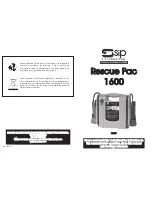
User and Programming Manual
84
XDS
Series
Query Indicator
The question mark in CURR?
Message Terminator
The <NL> (newline) indicator. Terminators are not part of the SCPI
syntax
Note:
The use of compound messages such as the one shown in Figure 12-2 is not
recommended as they typically exceed the available receive buffer length of
the XDS Series interface.
Headers
Headers are instructions recognized by the power source. Headers (which are sometimes known as
"keywords") may be either in the long form or the short form.
Long Form
The header is completely spelled out, such as VOLTAGE, SYSTEM, and OUTPUT.
The XDS Parser will stop parsing the remainder of any command after its short form
has been parsed. Effectively, this means the remainder will be a don't care and
syntax errors will not be detected or reported.
Short Form
The header has only the first three or four letters, such as VOLT, SYST, and OUTP.
The XDS parser only parses the short form of all SCPI commands and ignores any
remainder.
The SCPI interface is not sensitive to case. It will recognize any case mixture, such as VOLTAGE,
VOLTage or Voltage. Short form headers result in faster program execution.
Note:
In view of the 21 character receive buffer size of the XDS Series, the short form
is recommended under all circumstances.
Header Convention
In the command descriptions used in this manual, the proper short form is shown in upper-case
letters, such as DELay.
Header Separator
If a command has more than one header, you must separate them with a colon, e.g.
(SYSTem:ERRor LIMit:VOLT:LOW).
Optional Headers
The use of some headers is optional. Optional headers are shown in brackets, such as
VOLTage[:LEVel] 100.
Query Indicator
Following a header with a question mark turns it into a query (VOLTage?).
Message Unit Separator
When two or more message units are combined into a compound message, separate the units with a
semicolon (VOLT 100;CURR 60).
Root Specifier
When it precedes the first header of a message unit, the colon becomes the root specifier. It tells the
command parser that this is the root or the top node of the command tree. Note the difference
between root specifiers and header separators in the following examples:
SOURce:VOLTage:LEVel 100
All colons are header separators
:SOURce:VOLTage:LEVel 100
Only the first colon is a root specifier
SOURce:VOLTage:LEVel 100;:CURRent 55
Only the third colon is a root specifier
You do not have to precede root-level commands with a colon; there is an implied colon in front of
every root-level command.
Summary of Contents for XDS 100-100
Page 4: ...User and Programming Manual 4 XDS Series Electrical Safety Symbols Used in This Manual ...
Page 27: ...User and Programming Manual XDS Series 27 Figure 3 5 Outline Drawing XDS DC Supply ...
Page 41: ...User and Programming Manual XDS Series 41 Figure 5 4 Parallel Cable Interconnect Accessory ...
Page 69: ...User and Programming Manual XDS Series 69 Figure 8 3 Replaceable Fuse Locations ...
















































